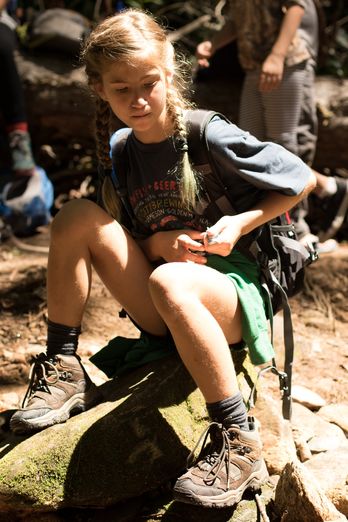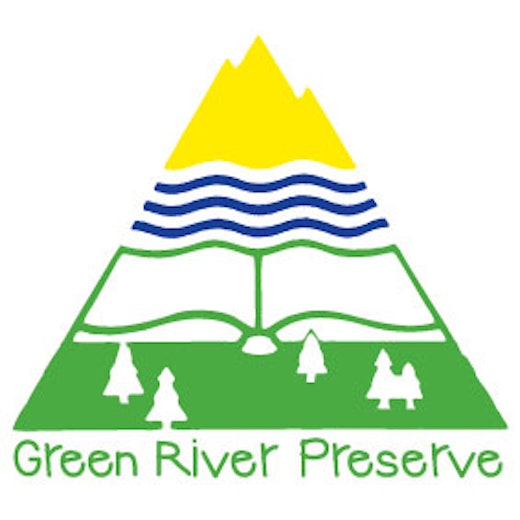
Destination
 Like most mentor hikes, this one begins with a name game. Each camper goes around, saying their name and their favorite water activity. For some, it is swimming, for others sunbathing, and for others, it is sailing or snorkeling. The back field gradually empties out, with mentor groups leaving for their hikes, heading to Uncle’s Falls or the river or the cave, but this group remains a moment longer. Eventually, Ted, the mentor, sets off, curving past the trailhead of the Bear Trail and then up, past the archery range. Behind him follow the twelve campers assigned to his hike.
Like most mentor hikes, this one begins with a name game. Each camper goes around, saying their name and their favorite water activity. For some, it is swimming, for others sunbathing, and for others, it is sailing or snorkeling. The back field gradually empties out, with mentor groups leaving for their hikes, heading to Uncle’s Falls or the river or the cave, but this group remains a moment longer. Eventually, Ted, the mentor, sets off, curving past the trailhead of the Bear Trail and then up, past the archery range. Behind him follow the twelve campers assigned to his hike.
 Ted is leading a “walkout” hike—a unique, and often more unstructured hike—in which campers set off straight from base camp, without getting bussed to the trailheads of their destinations. He leads the twelve campers through the land just beyond base camp, bushwhacking into the more uncharted territory that makes up so much of the Preserve. The group stops often, and Ted takes the time to explain some of the complexity of the forest’s network, the way the trees communicate with one another to deliver nutrients or how they differ from some of the old growth forests, like the redwoods, found out west.
Ted is leading a “walkout” hike—a unique, and often more unstructured hike—in which campers set off straight from base camp, without getting bussed to the trailheads of their destinations. He leads the twelve campers through the land just beyond base camp, bushwhacking into the more uncharted territory that makes up so much of the Preserve. The group stops often, and Ted takes the time to explain some of the complexity of the forest’s network, the way the trees communicate with one another to deliver nutrients or how they differ from some of the old growth forests, like the redwoods, found out west.
 Although Ted’s hike does not have a destination or the promise of a particularly grandiose scene at its end, it offers something entirely different than so many of the hikes on the Preserve: the opportunity to explore the beauty of nature in all of its simplicity, without the pressure to move forward or onward. On this hike, we can linger in a space for nearly an hour, playing camouflage and hearing from Ted about the unseen connections linking the forest together, learning to sit in nature without our eyes on something ahead of us. These hikes, in which we willingly get “lost,” force us to see the Preserve as not simply a collection of trails, but as a microcosm of a much greater natural world, where forest life seems at once miraculous, vast, and entirely everyday. Our group is surrounded by little more than towering trees, sparse underbrush, and an uncharacteristically clear blue sky, but this, perhaps, is enough—essential, even—to increase our understanding of and connection with the land in which we have, at least temporarily, made our homes.
Although Ted’s hike does not have a destination or the promise of a particularly grandiose scene at its end, it offers something entirely different than so many of the hikes on the Preserve: the opportunity to explore the beauty of nature in all of its simplicity, without the pressure to move forward or onward. On this hike, we can linger in a space for nearly an hour, playing camouflage and hearing from Ted about the unseen connections linking the forest together, learning to sit in nature without our eyes on something ahead of us. These hikes, in which we willingly get “lost,” force us to see the Preserve as not simply a collection of trails, but as a microcosm of a much greater natural world, where forest life seems at once miraculous, vast, and entirely everyday. Our group is surrounded by little more than towering trees, sparse underbrush, and an uncharacteristically clear blue sky, but this, perhaps, is enough—essential, even—to increase our understanding of and connection with the land in which we have, at least temporarily, made our homes.
Katherine Poore
